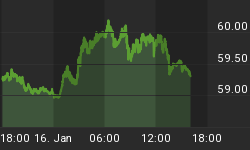The latest AAII investor sentiment numbers show once again the heavy presence of the neutral investor sentiment at an important short-term market juncture. This ongoing theme we've been discussing throughout the year -- the dominance of neutrality -- once again rears its ugly head.
It can also be seen in the latest perusal of financial news headlines which show a predominance of such descriptions of investors right now such as "concern," "caution," and "waiting on the sidelines." This sideline mentality has kept the market in a trading range this year and has been an inhibiting factor anytime a rally has gotten underway. This has been true whenever pivotal resistance levels have been reached, i.e., investors take profits and return to the sidelines.
What is the reason for this sideline mentality? As described in previous commentaries, I believe this can be attributed, in part, to the still-fresh mental scars from the post-1990s tech bubble bear market. Investors have gotten burned enough times in the past five years in various sectors and at different times to be fearful of outright plunging. The one exception to this is that we've seen the AAII bullish sentiment numbers explode upward as the neutrals leave the sidelines and jump in feet-first...after prolonged rallies near the top. This happened at the December 2004 rally peak and also after the 2003/early 2004 rally peak.
I'll venture a guess that while we may not witness the neutrals eager to join the bullish camp in the immediate-term, we'll probably witness the neutrals once again jumping off the fence and plunging headlong into the bullish camp later this summer after the next 120-week cycle bottom and around the 6-year cycle peak later this year. Assuming this happens it will have profound intermediate-term implications for the market, which will be discussed at that time.
Below is a line graph of the AAII investor sentiment percentage of neutral investors going back to last July a few weeks before the August market bottom. Note that the highest percentage of neutrals came at that time, a peak that was just recently surpassed.

The latest AAII statistics gave the lowest bullish sentiment reading in 13 years, coming in at an incredibly low 17%. If all that mattered from a contrarian standpoint was the bullish reading, that would be a huge heads-up signal to buy with both hands. But you have to view the bullish sentiment in the context of the bearish and neutral sentiment. And as of the latest report week the bears and neutrals were tied at 42%! Remember our ongoing theme of the "return of neutrality?" The neutrals haven't been this dominant in quite a while.
Returning to our discussion of market volatility, the CBOE Volatility Index (VIX) has hit this week a benchmark at the 18.00 area, which was last visited in August 2004. As expected VIX has been on the rise as if to announce to us the return of volatility from the relatively calm waters of the past couple of years. Year 2005 should be more volatile than 2004 as discussed in my commentary from a few weeks ago entitled "VIX forecasts turbulent year ahead."

To repeat from that missive, "Ultimately, an increase in stock market volatility is a function of cross-currents created by cycles that are bottoming and peaking simultaneously or at close intervals. For instance, after the 10-year cycle bottomed last October (producing the broad market rally into early 2005) the next of the longer-term cycles that will influence the market this year is the 6-year cycle, which is due to peak later in the year. Whenever the 6-year cycle peaks it tends to produce not only volatility, but sometimes it even results in waterfall declines during the actual peak. But before the peak hits the still-rising 6-year cycle is buoyant enough to allow for some spirited rallies." I would add it also creates the opportunity for equally spirited declines along the way which is the essence of volatility.
As market commentator Don Hays wrote in a recent newsletter, this year could turn out to be similar to 1994 in that the stock market was less-than-stellar and relative range-bound and economic performance was subdued as well. As Don says, "Volatility this year will wear out our patience" at times. Very well put.
















